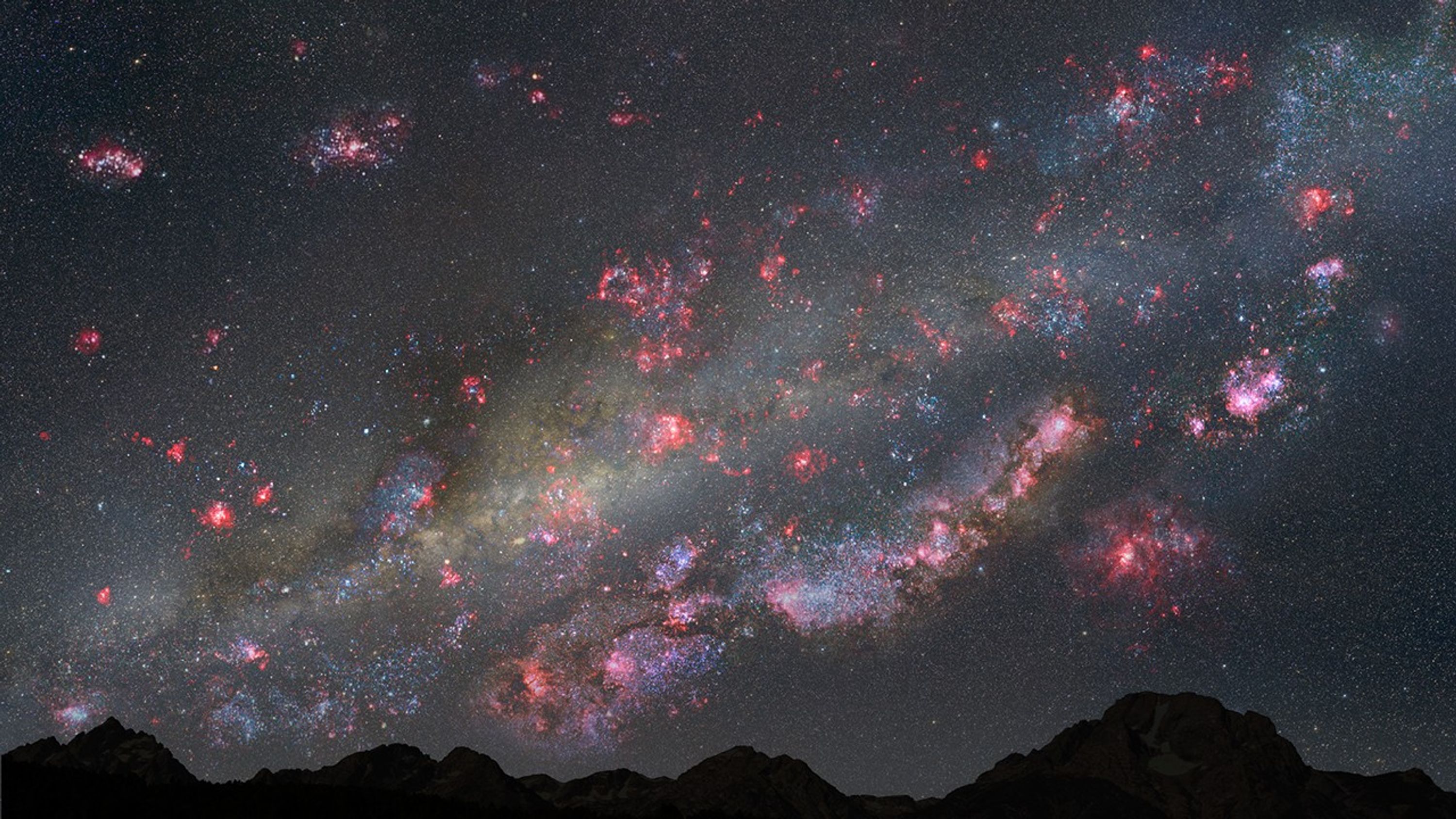1 min read
The Growth of Milky Way-Like Galaxies Over Time

These six snapshots taken by NASA's Hubble Space Telescope show how galaxies similar in mass to our Milky Way evolved over time.
The images reveal that Milky Way-like galaxies grow larger in size and in stellar mass over billions of years. The image at far right reveals a compact, youthful galaxy as it looked 11.3 billion years ago, when our universe was only about 2.5 billion years old. The bluish-white glow reveals that the fledgling galaxy is undergoing a wave of star birth, as its rich reservoir of gas compresses under gravity, creating myriad stars. At 10.3 billion years ago (image at center), the firestorm of star birth is reaching its peak. The stellar "baby boom" churned out stars 30 times faster than the Milky Way does today. The galaxy's yellowish color most likely indicates ongoing star formation that is being obscured by dust and gas.
Eventually, the galaxies exhaust their star-making gas. The galaxy at 8.9 billion years ago has developed a spiral shape, and the oldest stars reside in its central region. Nearly 3 billion years later, a similar galaxy has grown even larger. The galaxy is dominated by mostly older stars, which can be seen in its reddish appearance.
These images are part of the most comprehensive multi-observatory galaxy surveys yet. Stretching back in time more than 10 billion years, the census contains nearly 2,000 snapshots of Milky Way-like galaxies.
The images were taken between 2010 and 2012 with Hubble's Wide Field Camera 3 and Advanced Camera for Surveys as part of the Cosmic Assembly Near-infrared Deep Extragalactic Legacy Survey (CANDELS).
About the Object
- DistanceDistanceThe physical distance from Earth to the astronomical object. Distances within our solar system are usually measured in Astronomical Units (AU). Distances between stars are usually measured in light-years. Interstellar distances can also be measured in parsecs.Redshifts: from z = 0.26 to z = 2.8
About the Data
- Data DescriptionData DescriptionProposal: A description of the observations, their scientific justification, and the links to the data available in the science archive.
Science Team: The astronomers who planned the observations and analyzed the data. "PI" refers to the Principal Investigator.The science findings are based on various Hubble archival observations of galaxy surveys, including COSMOS, CDF–S, UDS, GOODS, and CANDELS. The images were created from Hubble data from proposal 12060, PIs: S. Faber (University of California, Santa Cruz) and H. Ferguson (STScI), et al. The science team includes: C. Papovich (Mitchell Inst./Texas A&M U.), I. Labbé (Leiden Obs.), R. Quadri and V. Tilvi (Mitchell Inst./Texas A&M U.), E.F. Bell (U. Michigan, Ann Arbor), K. Glazebrook (CAS/Swinburne U.), L. Spitler (Macquarie U., Sydney/ AAO), C.M.S. Straatman (Leiden Obs.), K.-V. Tran (Mitchell Inst./Texas A&M U.), P. Behroozi (STScI), M. Cowley (CAS/Swinburne U.), R. Davé (U. Western Cape/South African Astronomical Obs./African Inst. for Mathematical Sciences, Cape Town), A. Dekel (Hebrew U. of Jerusalem), M. Dickinson (NOAO), H.C. Ferguson (STScI), S.L. Finkelstein (U. Texas, Austin), E. Gawiser (Rutgers U.), H. Inami (NOAO), G. Kacprzak (CAS/Swinburne U.), L. Kawinwanichakij (Mitchell Inst./Texas A&M U.), D. Kocevski (U. Kentucky), A. Koekemoer (STScI), D. Koo (Lick Obs./U. California, Santa Cruz), P. Kurczynski (Rutgers U.), J.M. Lotz (STScI), Y. Lu (Kavli Institute/Stanford U.), R.A. Lucas (STScI), D. Mcintosh (U. Missouri, Kansas City), N. Mehrtens (Mitchell Inst./Texas A&M U.), B. Mobasher (U. California, Riverside), A. Monson (Carnegie Obs.), G. Morrison (IfA/U. Hawaii/CFHT), T. Nanayakkar (CAS/Swinburne U.), S.E. Persson (Carnegie Obs.), B. Salmon (Mitchell Inst./Texas A&M U.), R. Simons (JHU), A. Tomczak (Mitchell Inst./Texas A&M U.), P. van Dokkum (Yale U.), B. Weiner (Steward Obs./U. Arizona), and S.P. Willner (Harvard-Smithsonian Center for Astrophysics). - InstrumentInstrumentThe science instrument used to produce the data.HST>ACS/WFC and HST>WFC3/IR
- Exposure DatesExposure DatesThe date(s) that the telescope made its observations and the total exposure time.2010 – 2012
- Object NameObject NameA name or catalog number that astronomers use to identify an astronomical object.Milky Way-Mass Galaxies
- Release DateApril 9, 2015
- Science ReleaseOur Sun Came Late to the Milky Way’s Star-Birth Party
- Credit
Related Images & Videos

A Firestorm of Star Birth
This illustration depicts a view of the night sky from a hypothetical planet within the youthful Milky Way galaxy 10 billion years ago. The heavens are ablaze with a firestorm of star birth. Glowing pink clouds of hydrogen gas harbor countless newborn stars, and the bluish-white...
Share
Details
Claire Andreoli
NASA’s Goddard Space Flight Center
Greenbelt, Maryland
claire.andreoli@nasa.gov


































